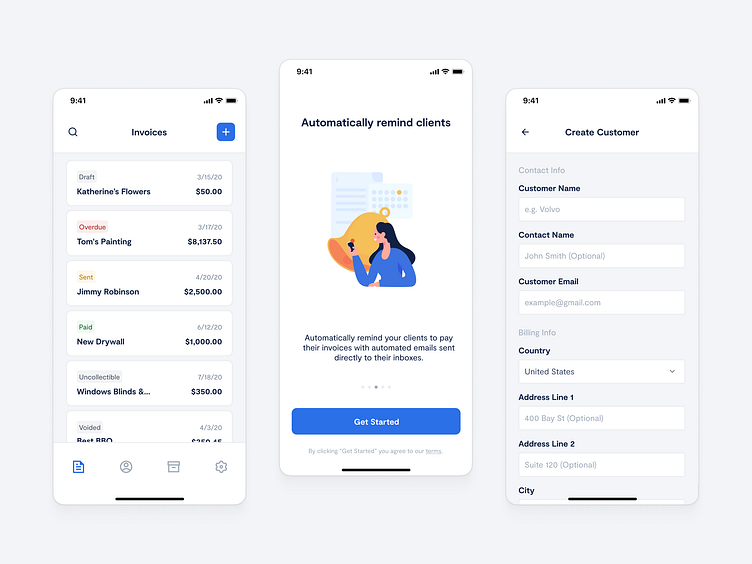Paidly - Stripe Invoicing App
Overview
During 2020, I noticed an increase in interest in entrepreneurship and freelancing, likely due to a lack of job security spurred on by the pandemic. I believed this would increase demand for tools like invoicing, and as someone with a freelancer background, I knew the importance. After conducting market research, I led a small team of developers and designed the entire application that launched on iOS and Android at the start of 2021.
Highlights
Processed $500k in invoices
Served over 2,000 SME clients
Became an official Stripe partner
Maintained an average 4-star or higher rating
Research
Drawing on my experiences with invoicing, I looked into what was available in the market for iOS and Android. While many industry leaders had comprehensive invoicing in their mobile apps, I was surprised to find Stripe's app ecosystem lacking even the most basic features.
Based upon this discovery and knowing how integral Stripe was to payments on the web, I started diving into hundreds of reviews, uncovering what people liked and disliked about existing applications. I discovered users preferred non-subscription-based access and the ability for all the core functions found on the web version of Stripe. To further validate this project, I surveyed relevant users and found that 90% of respondents were open to switching invoicing apps. The survey gave me the extra confidence to move forward and start designing.
Stripe-Based Invoicing App
Using a prototype in Figma and testing it in Maze, I was ready to take things to development and build an MVP. Realizing my development knowledge was not deep enough for the technical challenges ahead, I screened and hired a capable team of mobile developers.
Our collaboration happened primarily through Slack for daily communication and Trello for tracking our progress and feature implementation. The developers were provided with all the tools and documentation needed, including access to Figma and an extensively user-tested high-fidelity prototype, to ensure a smooth process for the MVP and beyond.
Insights
Building on a 3rd party platform often comes with benefits like an existing user base you can tap into, partnerships, and a powerful underlying API. At the same time, it also comes with the risk of locking your product into an ecosystem where the platform and supported features may not align with the needs of your users or product vision.
My key takeaway is that any product largely reliant on third-party platforms should have an actively updated plan to become independent if needed. It's hard to predict what can happen, but deviating can be necessary to enhance user experience, gain a broader market reach, or even remain in business.
Let’s connect!




